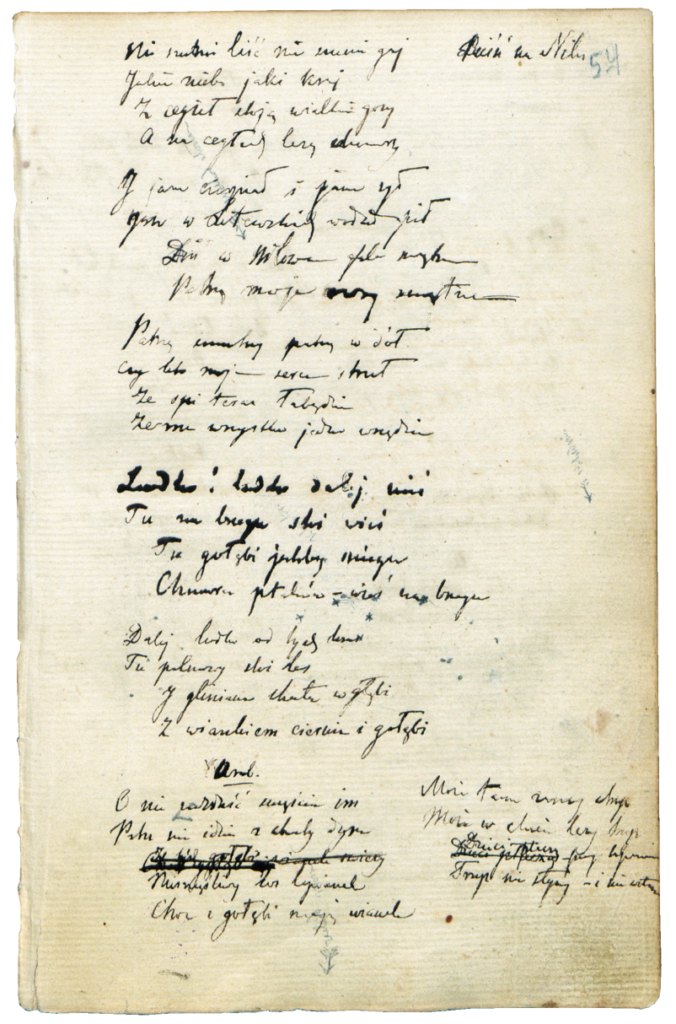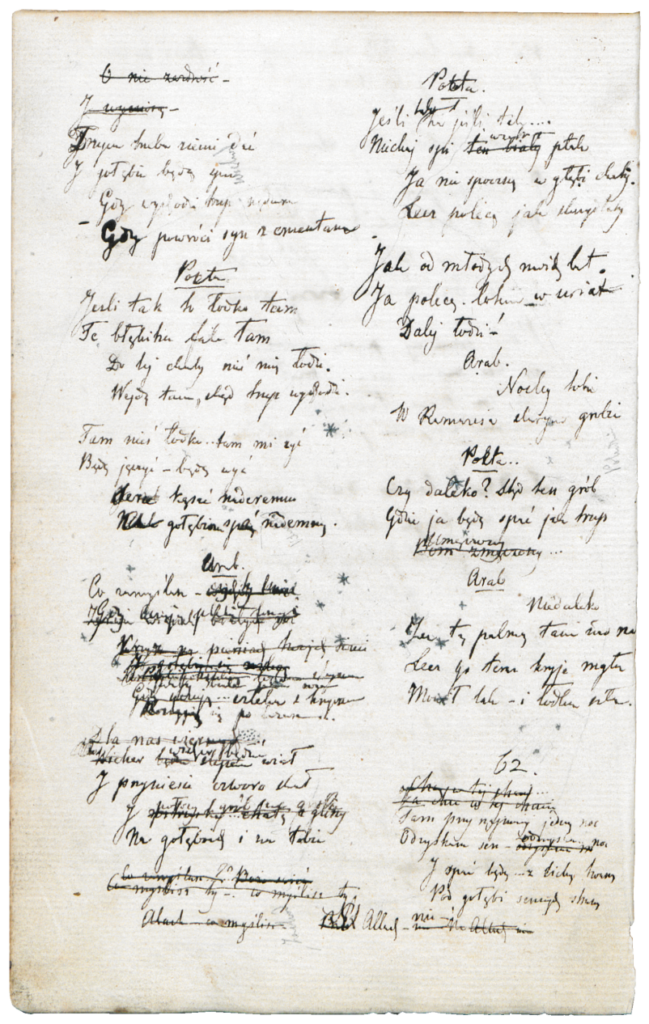The night I spent at the Holy Sepulchre impressed me in a manner which I shall never forget. At 7 in the evening the church was closed; left alone, I threw myself at the tombstone, overcome with passionate tears. […] At midnight a wooden bell rang out to wake up the Greek priests. All the different faiths, each one with its own designated space of this or that size within the building, began to awaken at the sound of it. […] First the Greeks said their mass at the Tomb, then the Armenians, then at 2 in the morning a fellow countryman priest [Maksymilian Ryłło] came out to say the mass for my cousin [the Motherland], whereupon I, kneeling at the very place where the white angel told Mary Magdalene: “He is not here, but is risen!”, attended throughout with a depth of feeling.
A letter by Juliusz Słowacki to his mother, 19th February 1837, Beirut

The first sketch of the sky above the monastery, covered with the manuscript of A Song on the Nile
The second version of the sketch depicting the sky above the Betcheszban monastery, with the constellation of Orion and markings for “East”, “West”, “South” and, in the middle: “The monastery”. Słowacki later used the page again to note down the ending of A Song on the Nile (a page from the Eastern Notebook, the Russian State Library in Moscow). He called Orion, his favourite constellation, “the Heavenly Lute” and wrote that it guided him throughout the whole journey.


